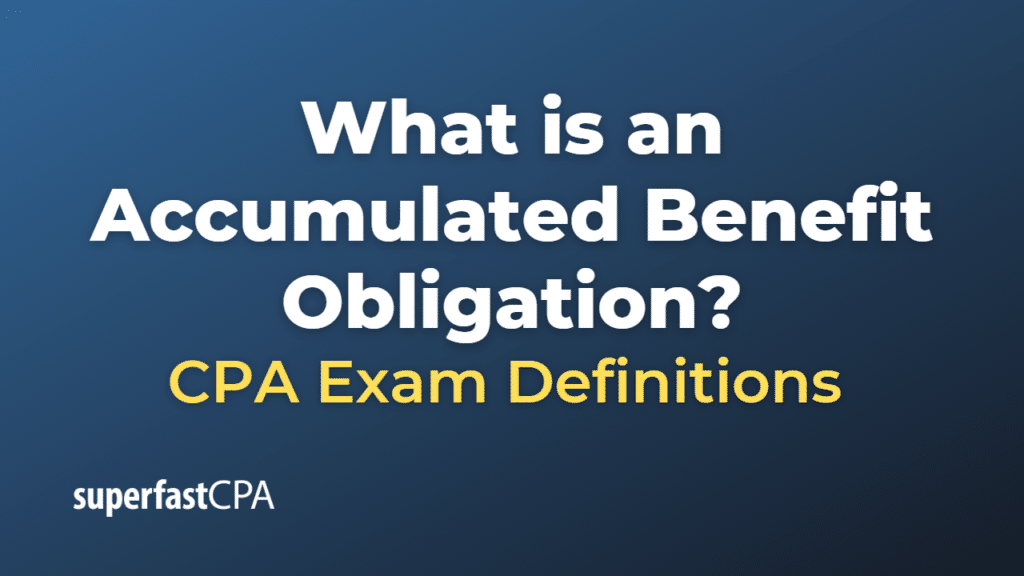Accumulated Benefit Obligation
An Accumulated Benefit Obligation (ABO) is an actuarial measure used to estimate the present value of a company’s pension plan liability. The ABO represents the total pension benefits earned by employees up to the valuation date, based on their current salary levels, without considering any future salary increases or additional years of service.
The ABO is used by companies to assess the financial health of their defined benefit pension plans, which are pension plans that promise employees a specific benefit upon retirement, usually based on factors such as years of service and salary history.
In calculating the ABO, the following factors are taken into account:
- Current salary levels of employees
- Years of service up to the valuation date
- The discount rate, which reflects the time value of money and the return on plan assets
- Mortality rates, to estimate the expected duration of benefit payments
- Retirement age and other plan-specific factors
The ABO is a crucial component of pension accounting and helps companies, investors, and regulators evaluate the financial stability of pension plans. It is important to note that the ABO does not account for future salary increases or additional years of service. Instead, it focuses solely on the benefits earned by employees up to the valuation date.
A related measure, the Projected Benefit Obligation (PBO), takes into account the same factors as the ABO but also includes assumptions about future salary increases and service, making it a more comprehensive measure of a company’s pension liability.
Example of an Accumulated Benefit Obligation
Let’s consider a simple example to illustrate the concept of Accumulated Benefit Obligation (ABO). Suppose a company has two employees, Employee A and Employee B, who are both participants in the company’s defined benefit pension plan. The pension plan promises employees an annual benefit equal to 1% of their final salary for each year of service.
Employee A:
- Current annual salary: $50,000
- Years of service: 10 years
Employee B:
- Current annual salary: $60,000
- Years of service: 5 years
Assumptions:
- Discount rate: 5%
- Retirement age: 65 for both employees
Let’s assume that Employee A is currently 55 years old and Employee B is 50 years old. To calculate the ABO, we first determine the annual pension benefits each employee has earned based on their current salaries and years of service:
Employee A: $50,000 (salary) x 1% (benefit rate) x 10 (years of service) = $5,000 per year Employee B: $60,000 (salary) x 1% (benefit rate) x 5 (years of service) = $3,000 per year
Next, we need to calculate the present value of these annual pension benefits, considering the discount rate and the number of years until retirement:
Employee A: $5,000 x (1 – (1 + 5%)^(-10)) / 5% = $38,697 Employee B: $3,000 x (1 – (1 + 5%)^(-15)) / 5% = $34,428
Now, we can determine the ABO by summing the present values of the pension benefits for both employees:
ABO = $38,697 (Employee A) + $34,428 (Employee B) = $73,125
In this example, the Accumulated Benefit Obligation for the company’s pension plan is $73,125, representing the present value of the pension benefits earned by Employee A and Employee B up to the valuation date, based on their current salaries and years of service.













